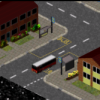Being an Indian born in India taking computer science in my senior years, i have always adored c++.
When i saw this place that said c++ is not the best first language to learn i was aghast!
But that has nothing to do with my problem.
Ever since i met sfml, i have loved her. She is my sugar to my butter, my heart to me soul, my life to her death. Sure soon i'd see unreal and scoot over (Honestly the only reason i am not running one is because i have to upgrade my laptop to do so) but that destroys the point.
So for one of my projects i have decided to make a platformer.
I went about it in this way.
Step 1: Start
Step 2: figure out where out would get the art
This was a bit of challenge, but i usually go to open game art, sometimes other places who's name i forget
Step 3: Use the art for a character using sprites and draw it.
This is easier said than done.considering most of the free art dosn't come as sprite sheets, what does come in sprite sheet comes without an idle animation, and so on. Eventually i had to make my own sprite sheets using someone else's images
Ah, before you ask the sprite sheets are for the animation.
Step 4: figure out how to draw a map
This was somehow tougher. For starters i had no clue on how to start, i am a computer scientist not an artist. why is it so hard!!!
So i found this software called tiles, and well i can make maps from given tilesets and it works.
Step 6: draw a map.
Easy a simple draw function, took me time to realize that the map has to be drawn before the characters....sad...
Step 7:Place the character on the map.
Again when i did draw the character he was standing at 0,0..that's top left if you go by graphics logic. took me time but now i have approximately placed him on top of the first tile.
Step 8: now what?
Now i have a lot of problems with this.
The major on of them is the fact that my character walks over water, like no difference.
I looked for tutorials online. there was this one guy who's idea was a naive if anything.
he had an array of strings and used it to draw every tile on the game.
As good as it is, isn't it better to have the map as an single image, instead of drawing it one tile at a time?
i'm not sure, i'm a noob.
So my question is, what's the logic in a platformer. I mean 2d games usually are not supposed to have that level of depth, how do i check if my character is flying over the place where he should be dead?






